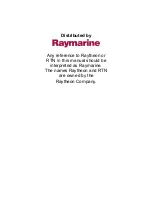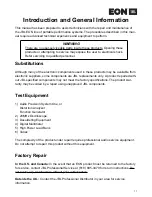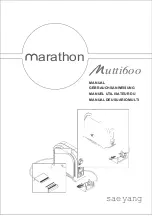
instructions for
METAL BENDER BENCH & FLOOR MOUNTING
model no’s:
pBB04.v2 & pBF04.v2
Thank you for purchasing a Sealey product. Manufactured to a high standard, this product will, if used according to these instructions,
and properly maintained, give you years of trouble free performance.
IMPORTANT:
PLEASE READ THESE INSTRUCTIONS CAREFULLY. NOTE THE SAFE OPERATIONAL REQUIREMENTS, WARNINGS & CAUTIONS. USE
THE PRODUCT CORRECTLY AND WITH CARE FOR THE PURPOSE FOR WHICH IT IS INTENDED. FAILURE TO DO SO MAY CAUSE DAMAGE AND/OR
PERSONAL INJURY AND WILL INVALIDATE THE WARRANTY. KEEP THESE INSTRUCTIONS SAFE FOR FUTURE USE.
1. SAFETY
9
ensure that the metal bender is in sound condition and good working order. take action for immediate repair or replacement of
damaged
parts.
Use recommended parts only. The use of improper parts may be dangerous and will invalidate the warranty.
9
locate the bender in a suitable, well lit work area.
9
Keep work area clean and tidy and free from unrelated materials.
9
mount onto a strong, stable work surface or onto level and solid ground (preferably concrete) as appropriate.
9
ensure all non-essential persons keep a safe distance whilst the bender is in use.
9
check that all bending dies, pins, stops and attachments are correctly and securely mounted before commencing a bend.
9
Wear safety goggles and gloves when bending parts.
9
Always allow enough material to extend beyond the stop block and forming dies when making bends to ensure that the material does
not come free allowing the handle to release suddenly.
8
DO NOT
bend any material other than hot rolled mild steel.
8
DO NOT
operate the metal bender if damaged.
8
DO NOT
allow untrained persons to operate the bender.
8
DO NOT
use the metal bender for purposes other than that for which it is intended.
8
DO NOT
try to bend round stock using the sharp angle attachment.
8
DO NOT
modify the bender in any way or use a handle extension other than the one provided.
8
DO NOT
try to bend material larger than the maximum sizes stipulated below.
2. INTRODUCTION
m
anually operated bench and floor mounted metal bender. Capable of producing radiused and angles bends in strips up to 50 mm wide and
radiused bends in round/square stock up to 16 mm dia/side. supplied with seven dies, 1” to 3” .
3. SpECIFICATION
model no’s: ..........................................
PBB04.V2, PBF04.V2
die diameters: .........
.....1”, 1-1/4, 1-1/2”, 1-3/4”, 2”, 2-1/2”, 3”
Bending capacity (die):
flat material: ................................................
up to 5/16” x 2”
square or round material: .....................................
up to 5/8”
Bending capacity (Angle Attachment):
3/16” flat mild steel: ..........................................
up to 2” wide
1/4” Flat Mild Steel:
.....................................
up to 1-1/4” wide
4. ASSEMBLY
WARNING!
ensure that you have read and understood section 1 safety instructions before operating the bender.
WARNING!
to avoid serious injury do not operate the bender unless it is securely mounted to the floor or workbench.
P
BB04.V2 & PBF04.V2 | Issue:1 10/11/17
Original Language Version
© Jack sealey limited
refer to
instruction
manual
Wear eye
protection
Wear protective
gloves
fig.2
fig.1






















